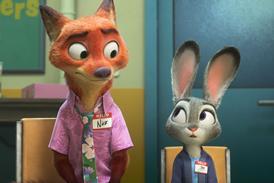Does box-office success really depend on Twitter chatter? Caroline Parry looks at how international distributors are tapping online word of mouth.

Digital marketing campaigns that drip-feed content to eager fans ahead of a film’s launch have become an integral part of any pre-release strategy. But the recent explosion in social media has made word-of-mouth marketing a stronger force than ever.
It is a long way from the micro-budgeted The Blair Witch Project, which used the internet back in 1999 to launch a groundbreaking campaign that helped it take more than $240m internationally, to the sophisticated viral campaigns supporting recent films such as The Dark Knight, Watchmen and District 9.
But as the scope of the content that can be created and distributed has grown, so has the level of pre-launch engagement and reach that a distributor can have with the audience.
Tools of engagement
The UK Film Council recently launched a funding trial that will allow UK distributors to apply for money earlier in the production process for internet-based marketing.
Alex Stolz, senior executive at the UK Film Council, says film marketing is being forced to develop beyond its traditional four-week pre-release window.
“There are myriad tools, particularly in social media, which can be used,” he adds. “But it requires time, it cannot just be an add-on. It’s a process of engagement.”
Social media sites such as Twitter or FriendFeed have a dual purpose for marketers. They help to distribute a variety of content including trailers, games and virals, and they also allow people to air their comments - whether positive or negative - within minutes of seeing a film.
“Twitter is changing word of mouth in film release as it can have an impact very quickly,” says Dan Little, head of interactive at the London-based digital film marketing agency Picture Production Company (PPC). “Word of mouth has always been a factor, but if I can broadcast my opinion to my Twitter base then I can quickly amplify that.
On the other hand, I can increase the value of a person who is engaging with my content because the more they enjoy it, the more vocal they are.”
Recent online chatter suggests negative tweets contributed to the 39% slide of Universal’s Brüno at the US box office from its Friday opening to Saturday, while excitable Twitter comments helped Quentin Tarantino’s Inglourious Basterds to a better-than-expected worldwide opening weekend.
Little adds that original video content or online games can be created for about $16,200 but, through social media and content sites such as YouTube, you can generate a return on investment that would far exceed the traditional media spend. He points to the mini-videos PPC developed for Paramount’s Watchmen launch earlier this year that clocked up more than 2 million unique views and attracted more than 3,000 followers on Twitter before the film’s release.
In-depth data
Digital media can also return in-depth data on who is engaging with the content and how they can continue to be targeted. David Braylark, founder of US-based agency 3P Interactive, which works with a number of undisclosed international distributors, explains: “Based on the response from the audience, you could potentially shape a marketing campaign around the feedback.”
Which is exactly the data the UKFC is hoping the recipients of its digital funding will collect from their campaigns. Stolz adds: “If you can say your film has built a 100,000-strong following in a particular area, that’s a very powerful piece of information.”




















No comments yet